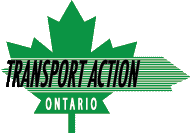By
Transport Action Ontario
|
Latest News ,
Urban Transit
There is a massive amount of transit investment underway in Canada. Greater Toronto alone has about $80B of projects underway; while Ottawa has three LRT projects ongoing and another one on the drawing board. However, as described in our post of January 12, 2024 “Capital Cost Escalation of Canadian Transit Projects”, costs are skyrocketing and solutions need to be found.
There is also concern that, despite generous contract prices, many Canadian projects are still going over budget/over time. This is despite many of them using P3 contracts (public-private-partnership), allegedly created to reduce likelihood of over budget/over time. Fiasco projects like Eglinton Crosstown LRT and Ottawa Confederation Line inspire little confidence.
Industry leaders are starting to react to this over budget/over time problem. A group of leading Canadian transit industry leaders has formed a group called “Future of Infrastructure Group” (FIG) and produced a report called “Reducing Risk in Transit Projects”. Ontario and federal contributors to the report included City of Toronto, TTC, University of Toronto, Infrastructure Ontario, Metrolinx, Infrastructure Canada, Transport Canada, Canada Infrastructure Bank and of course dozens of Ontario-based private companies.
The report focusses on allocating and mitigating risk in projects, which should lead to reduced costs, better timelines, less disputes/claims and better quality of contractors. The report discusses different contracting models that appear to show promise, including:
- Eglinton Crosstown West – smart incentive mechanisms and took a diligent approach to proactively addressing risk
- Union Station Enhancement Project – a very complex project. Uses an alliance contracting model that has lead to zero litigation to date
The report can be viewed here.
Photo: Construction work continues at South Keys, two years after the expected reopening date of the Trillium Line.






